O que é uma futurespective?
Uma futurespective é um processo que equipes ágeis podem realizar no início de um projeto. Ela ajuda as equipes a definir uma estratégia de alto nível que apoie a entrega fluida de seus objetivos.
Durante uma futurespective, a equipe analisa o projeto no contexto de aspectos como:
- as habilidades, a especialização e a experiência dos membros da equipe;
- os recursos disponíveis;
- os riscos e obstáculos que podem surgir; e
- os parâmetros dentro dos quais devem trabalhar,
a fim de gerar:
- um entendimento compartilhado sobre a trajetória do projeto; e
- a confirmação dos primeiros passos que a equipe deve dar para começar.
Embora futurespectives e retrospectives sigam processos bastante semelhantes, elas diferem em alguns pontos importantes:
- a retrospective analisa um período recente para revisar o que aconteceu — com o objetivo de orientar os próximos passos da equipe;
- a futurespective considera o projeto como um todo para antecipar o que pode acontecer — com o objetivo de definir uma estratégia e os primeiros passos necessários para iniciar o projeto.
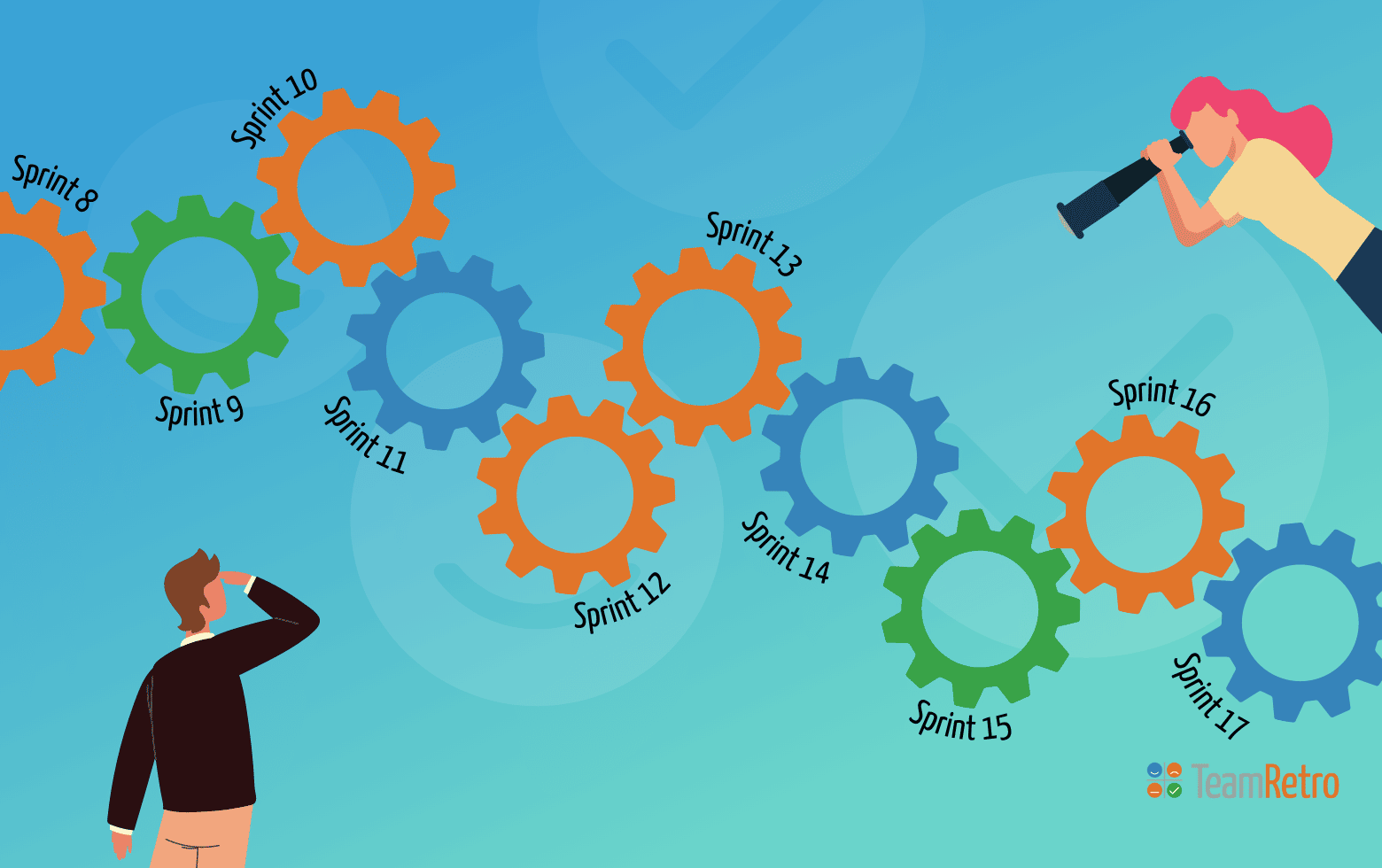
Por que realizar uma futurespective?
Há dois motivos principais pelos quais um Scrum Master pode realizar uma futurespective. O primeiro é para iniciar um novo projeto, e o segundo é para reativar um projeto existente.
Uma futurespective oferece à equipe a oportunidade de criar e fortalecer as conexões que são essenciais para a saúde da equipe. É um momento ideal de integração — a ocasião perfeita para explorar as motivações e preocupações do time e compartilhar como os membros trabalharam bem juntos no passado. Isso oferece ao Scrum Master:
- insights valiosos sobre como ele pode apoiar melhor sua equipe; e
- a oportunidade de iniciar conversas importantes, como sobre lidar com a imprevisibilidade.
Além disso, a futurespective ajuda a equipe a construir uma visão e um propósito comuns. Não é surpresa que seja uma ótima forma de alinhar equipes recém-formadas ou verificar o alinhamento de equipes já estabelecidas.
Quando se trata do projeto, a futurespective é um excelente mecanismo de planejamento. Ela pode ser usada para identificar, por exemplo:
- áreas de preocupação ou riscos percebidos;
- recursos e ferramentas necessários; e
- lacunas existentes na equipe.
Isso significa que a definição de soluções para lidar com esses desafios pode começar o quanto antes.
Uma futurespective também pode ser usada para definir o tom de um projeto. Por isso, o Scrum Master pode utilizá-la para:
- incluir um aquecimento ou icebreaker;
- aplicar o conceito de Circles and Soup de Larson;
- definir metas SMART; e
- adicionar aos acordos de equipe.
O mais importante é que as futurespectives garantem que, no início do projeto, todos os membros da equipe estejam alinhados.
As futurespectives também são uma excelente forma de reiniciar um projeto parado ou bloqueado. Elas ajudam a revitalizar uma equipe desmotivada, quebrar a rotina das retrospectives e permitir que o time volte a refletir sobre seus objetivos.
Futurespective Prime Directive
A prime directive is popularly understood to be a guiding principle. Although it’s possible to find a number of Futurespective Prime Directives, Caroli and Caetano’s version is the one most widely cited.
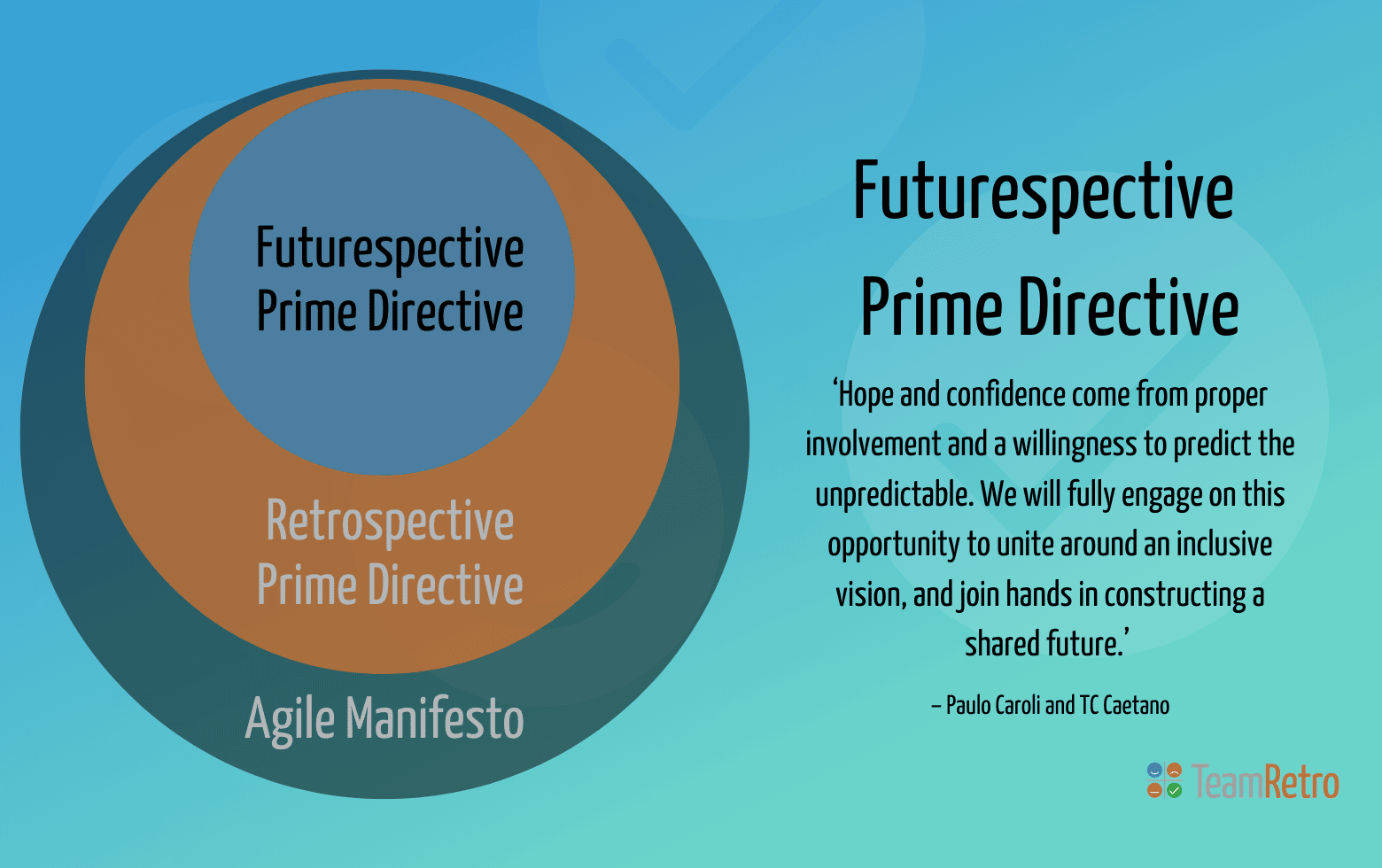
Underpinned by the Agile Manifesto, and like the Retrospective Prime Directive it complements, Caroli and Caetano’s Futurespective Prime Directive is a mindset. It aims to foster a positive, collaborative context within which a team can deliver the best possible outcomes.
The Directive sets an optimistic tone. It reinforces the importance of the involvement of the whole team and the shared ownership of the team’s vision of the future. For it to be most effective, the team must feel psychologically safe. After all, trying to predict the future is a big ask! The safer the team feels, the more ideas they will be comfortable to offer.
How to run a futurespective?
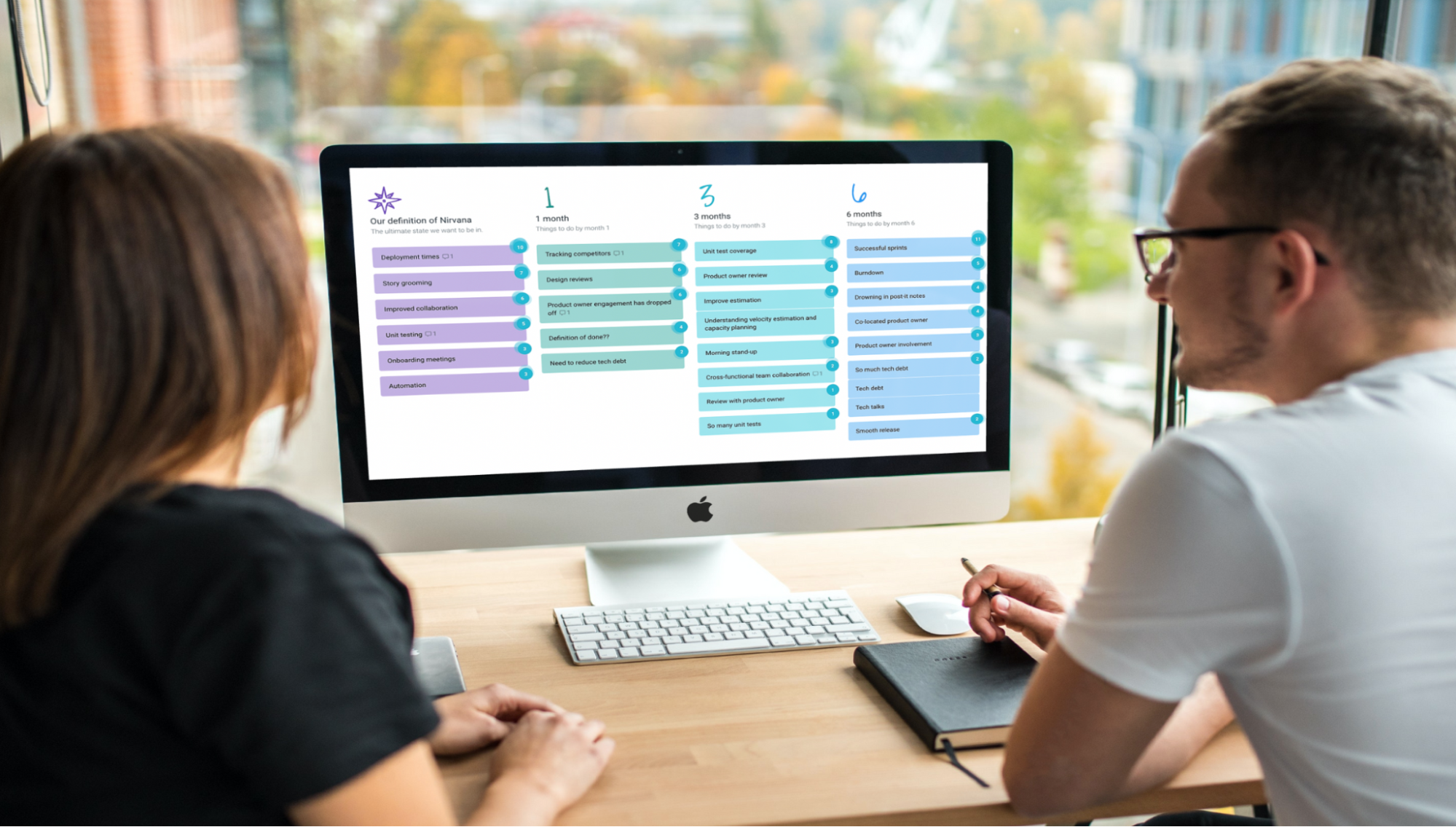
There are currently two main approaches as to how to run a futurespective.
- Consider the project as if it has been delivered
- View the project as if it is to be delivered
The first approach has participants imagining they are their future selves looking back at the project that has been successfully finished. This approach has participants imagining they are thinking back on all of the goals they have delivered and how they did so. They (creatively) reminisce about the things that went well, the hurdles they encountered, and how they overcame them. They are effectively doing a retrospective in the future (so, a futurespective).
It’s possible for the team to have a great deal of fun with this approach. An end of project lunch could be held during the futurespective. A warm up can include reference to what their future selves did in the past year of which they are most proud, or the latest (future) trend or (future) film can be discussed.
The second approach is a little more straightforward. Participants are invited to look ahead and offer their perspective of what the future has in store (so again, a futurespective). This approach is possibly better suited to a team who are new to agile, or simply less comfortable with the other.
Regardless of which vantage point your team prefers to adopt for their futurespective, the purpose and the process remain the same.
The five steps of a retrospective can be applied to a futurespective. The important thing to keep in view is the different mindset that is to be adopted.
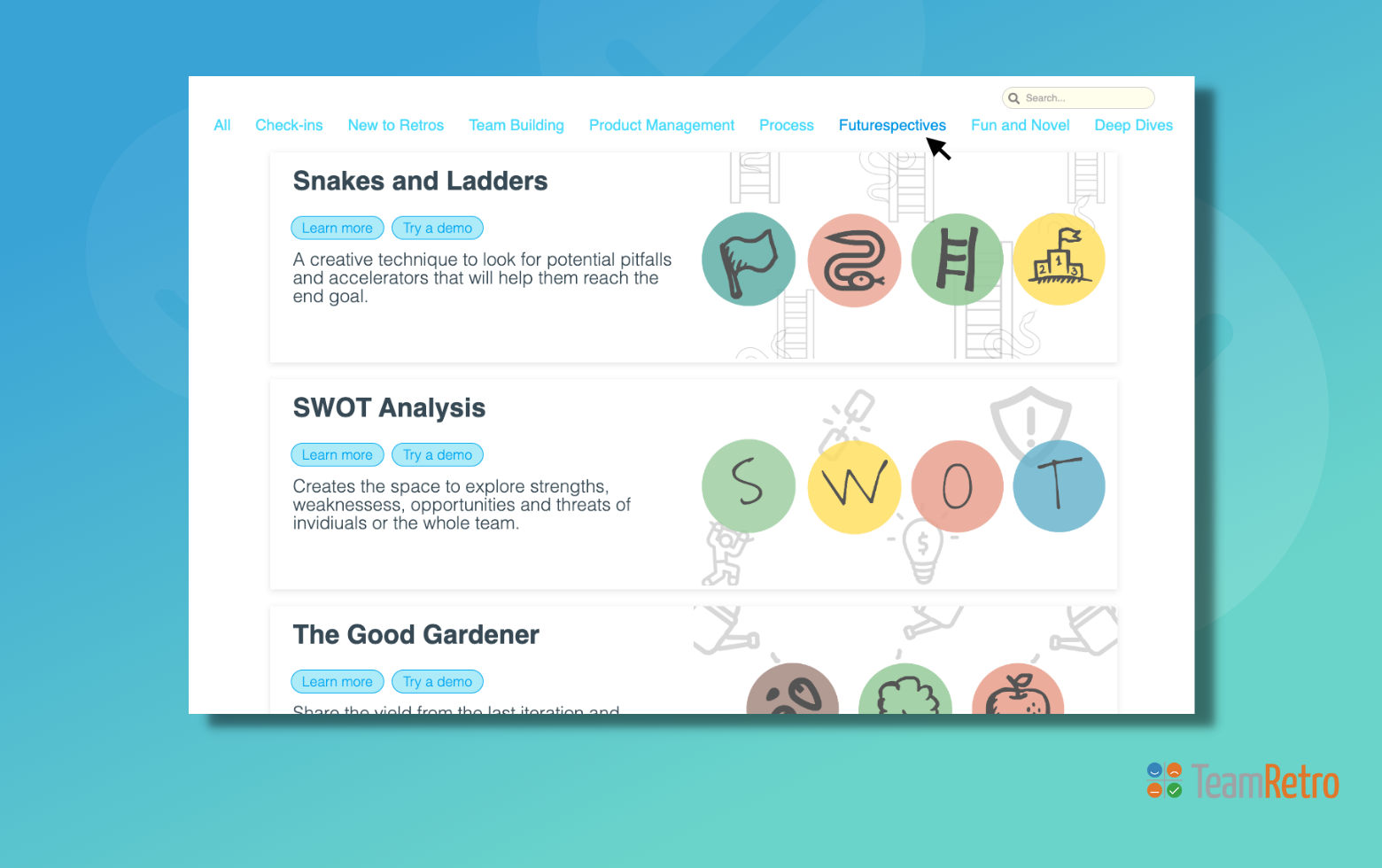
Once you’ve embraced the Futurespective Prime Directive mindset and picked a point of view from which to examine the project, it’s time to choose a template.
Online futurespective templates offer all sorts of benefits. They are an ideal tool when it comes to remote team engagement. They can also support the delivery of asynchronous futurespectives. An online template captures all input as you go so there’s no time wasted at the end of your futurespective rewriting ideas, input and action items. Best of all, they can integrate with your existing workflow to save you even more time.
The best template to choose is one that will help your team produce their high-level project strategy, the way they want. With so many amazing templates available, we’ve built an online futurespective template selector to help you choose the right one for your team. As far as our team goes, we share our favorite futurespectives below.
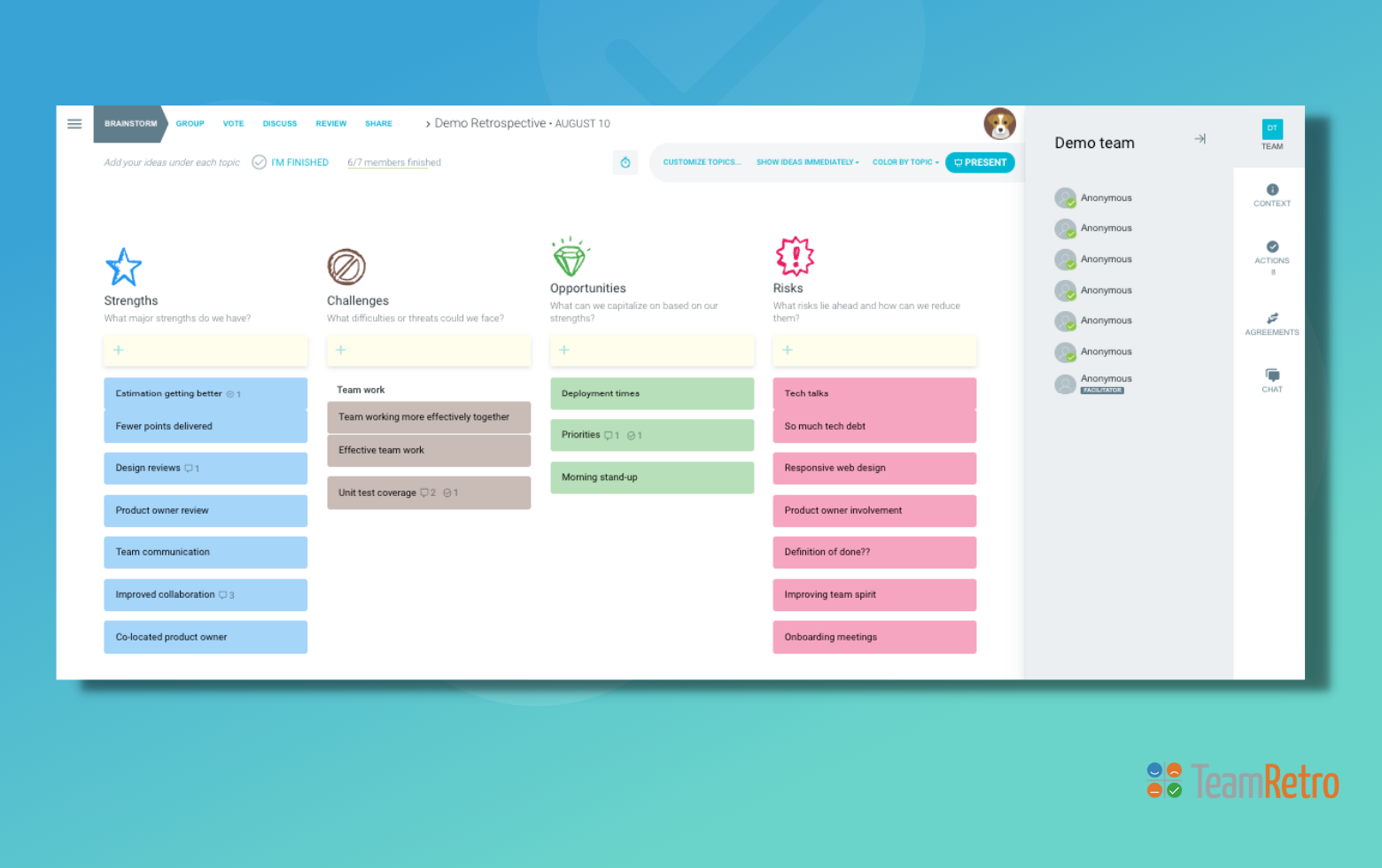
Using the template as a guide, participants are invited to offer their input. Allowing time for quiet, individual brainstorming where team members can contribute their ideas anonymously will help overcome such barriers as groupthink.
The Scrum Master should encourage participants to draw on their past experience and knowledge to populate the template. Everyone is to be reminded to offer their best (informed) guess. It’s important to acknowledge that any predictions they make that don’t come true, won’t be held against them.
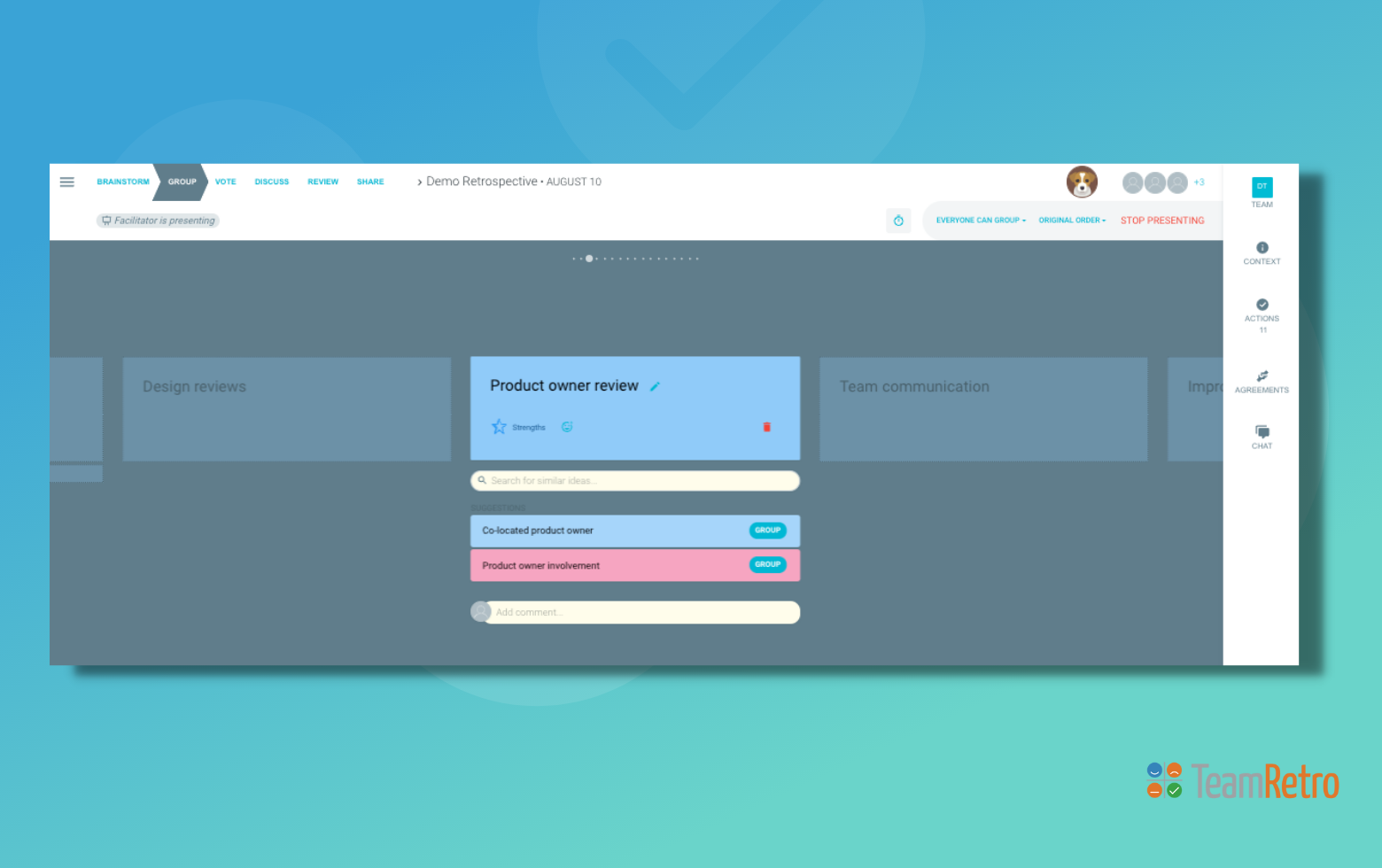
It’s at this stage of the futurespective that the team’s shared understanding of their project strategy will start to germinate. So it’s vital to make sure all ideas are understood and if not, clarity is sought.
Again, reference to previous projects plays an important role here. It’s an opportunity for the team to learn about what they each bring to the table and how it can be used to support the project and team.
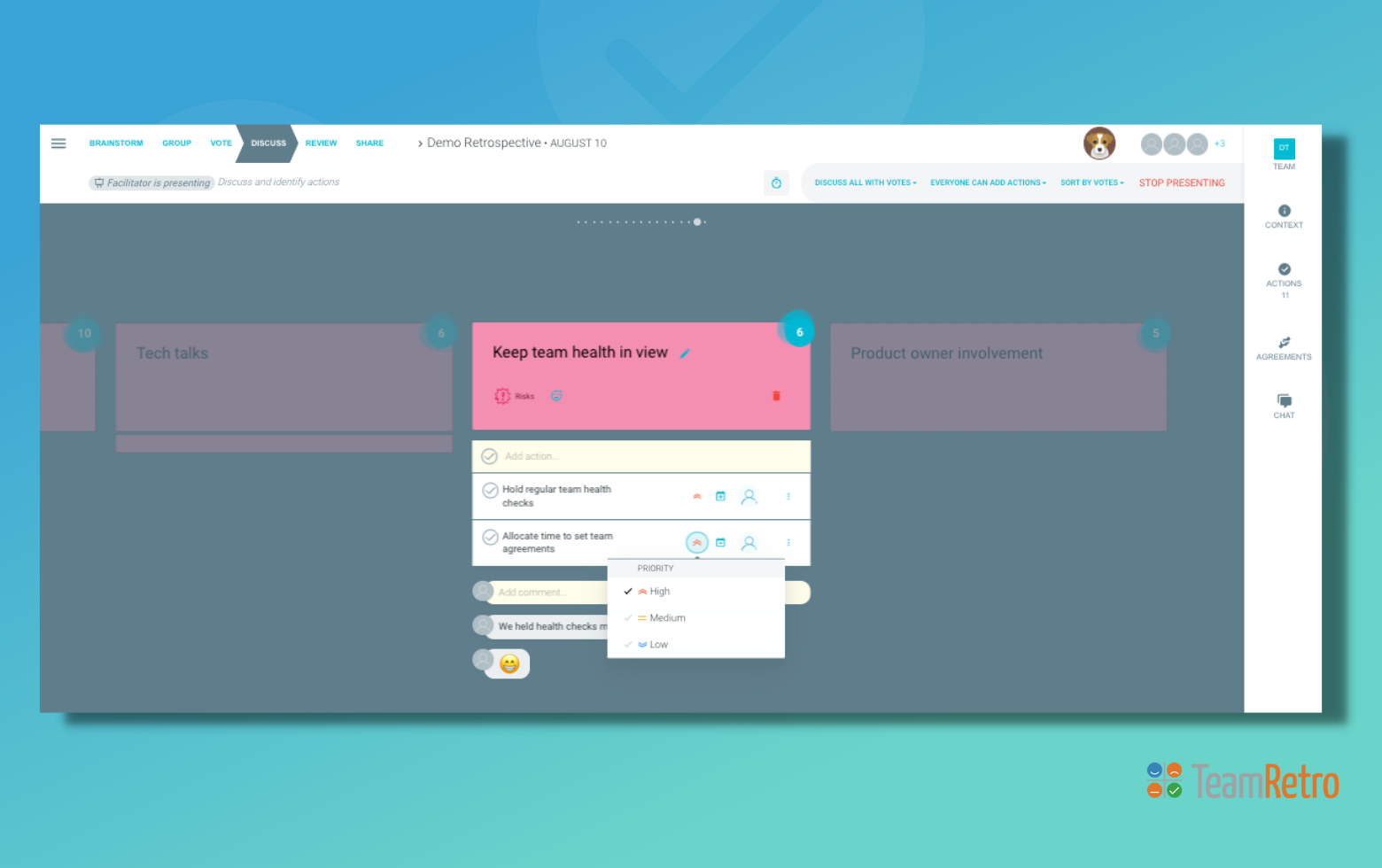
It’s very easy to get swept up with team building and delivering high-level vision, but it’s important to make sure your futurespective produces what’s needed to get the project started. Shaping action items is the way to do this. Make sure you limit the number of actions to the number you need to get things started, and keep them SMART.
Some actions may apply to the team more so than the project. Actions that support the team’s ability to work together can be included as a team agreement.
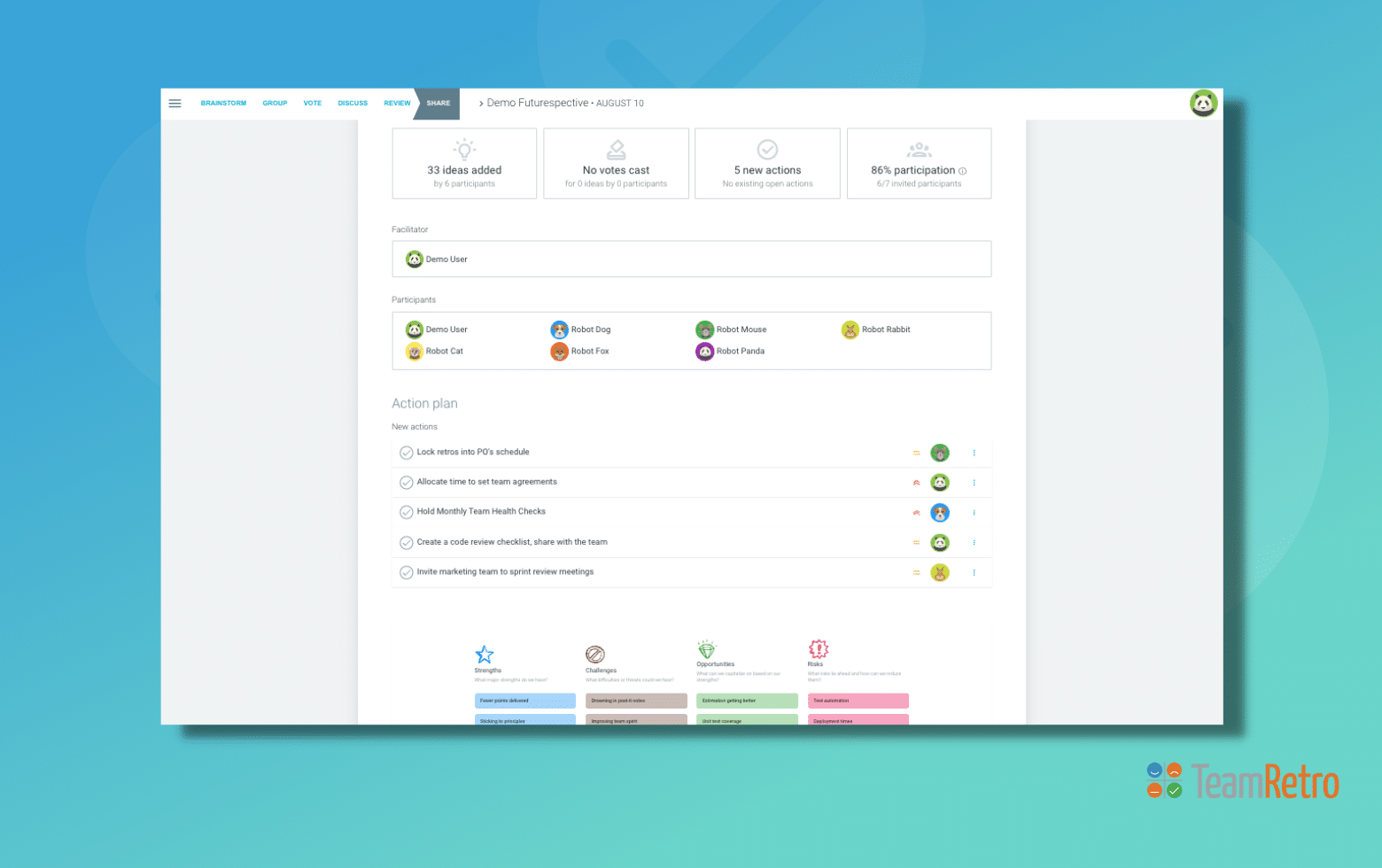
The last step is to summarize the futurespective. This ensures that all team members understand the action items before the meeting is closed.
Ending the meeting with a Return on Time Invested (ROTI) is informative and a healthy habit to support. It helps the Scrum Master gauge the effectiveness of meetings and make adjustments if needed.
Finally, the Scrum Master will share the outcomes of the futurespective and follow up on the actions.
Examples of futurespectives
Here are our top three futurespectives to help get you started.
State Of Nirvana futurespective
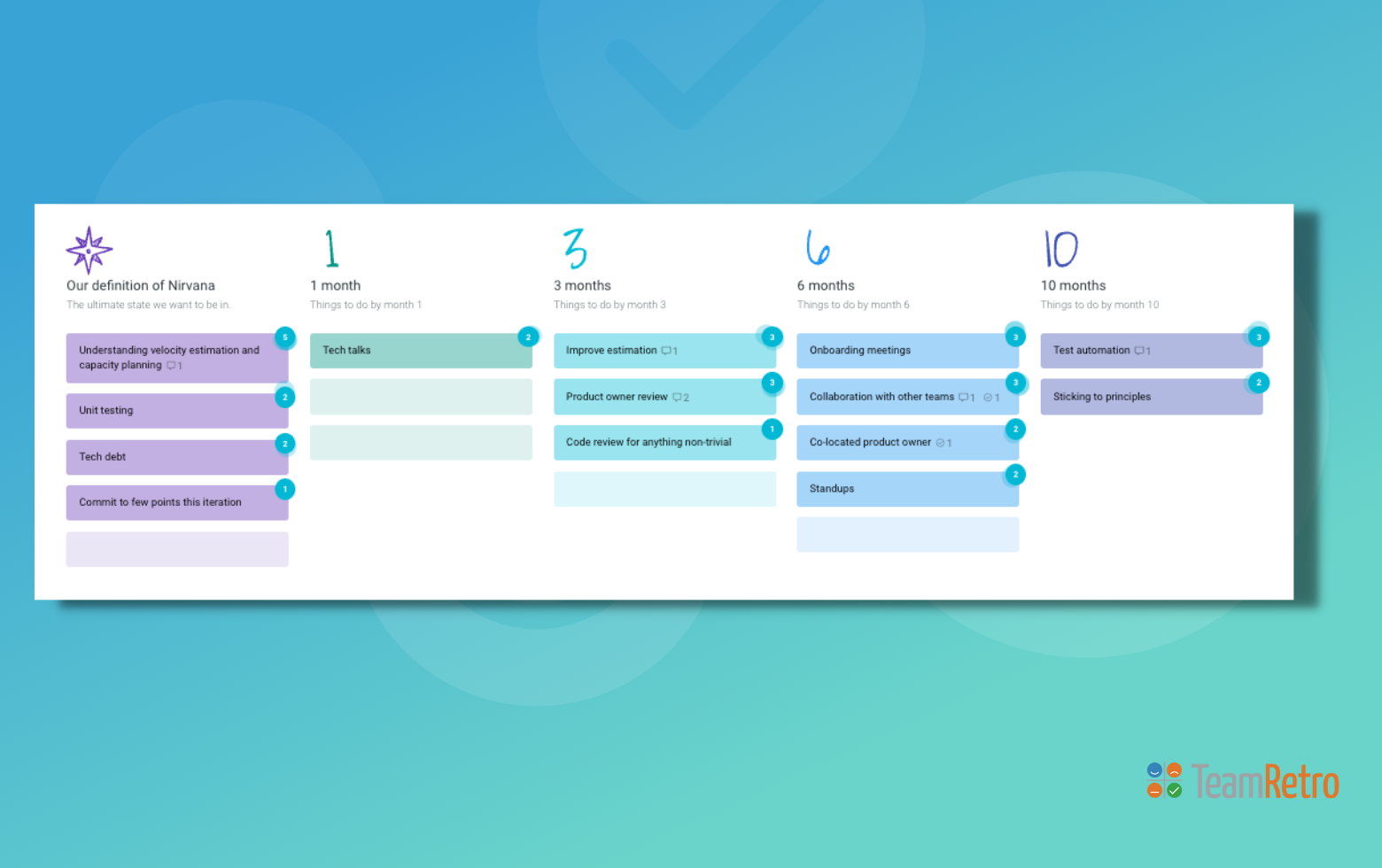
The State of Nirvana futurespective sees team members define their version of nirvana. They step out what they expect to have achieved by the first, third, sixth and tenth month, with the ideas they share building an outline of their way forward. Learn more about State of Nirvana futurespective.
Plus, Minus, Interesting (PMI)
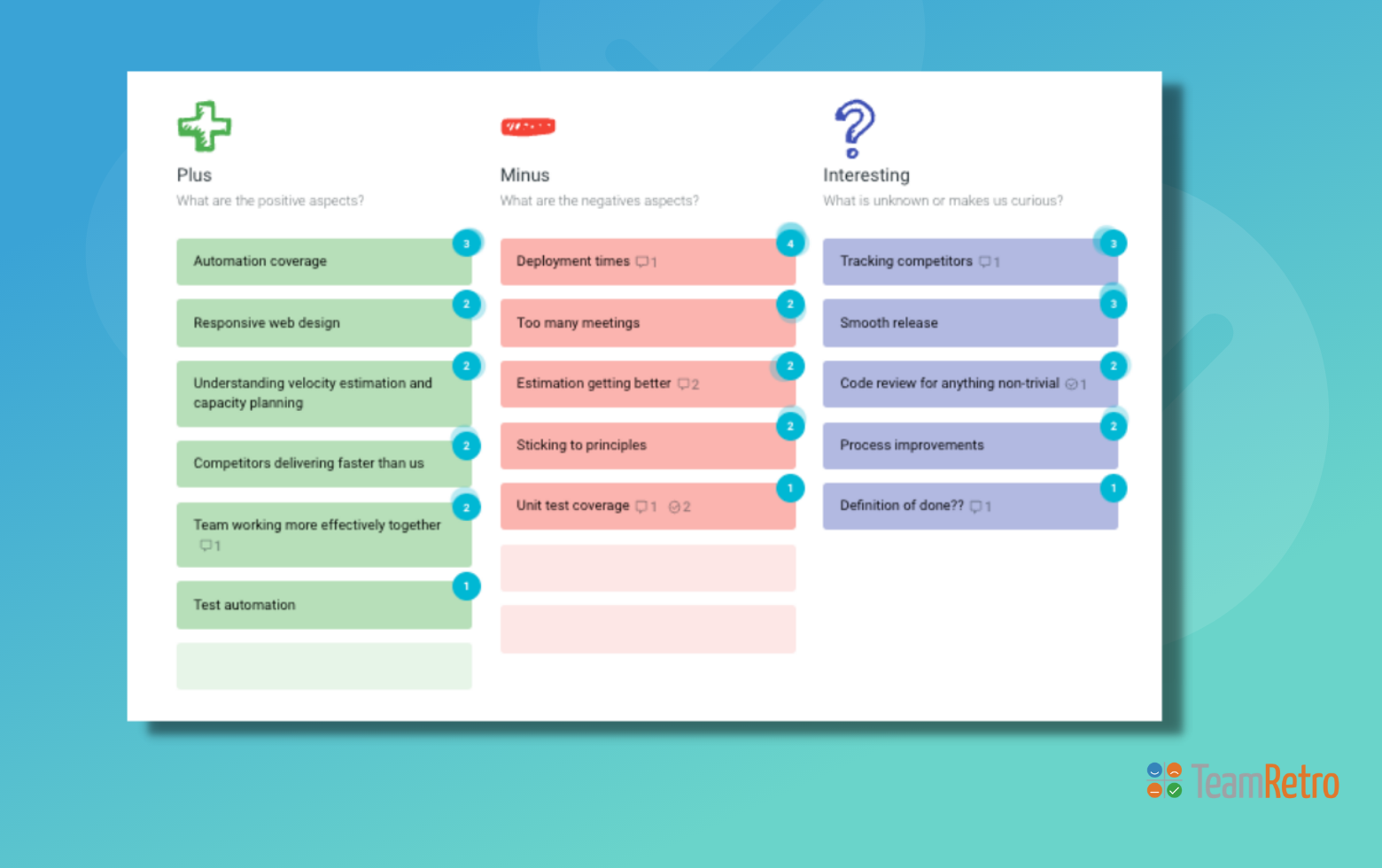
The PMI Futurespective helps a team view a topic from multiple perspectives. It ensures a broad view of the project is considered as team members cannot dismiss the variety of inputs that they themselves have put together. Learn more about Plus, Minus, Interesting (PMI).
SCOR futurespective
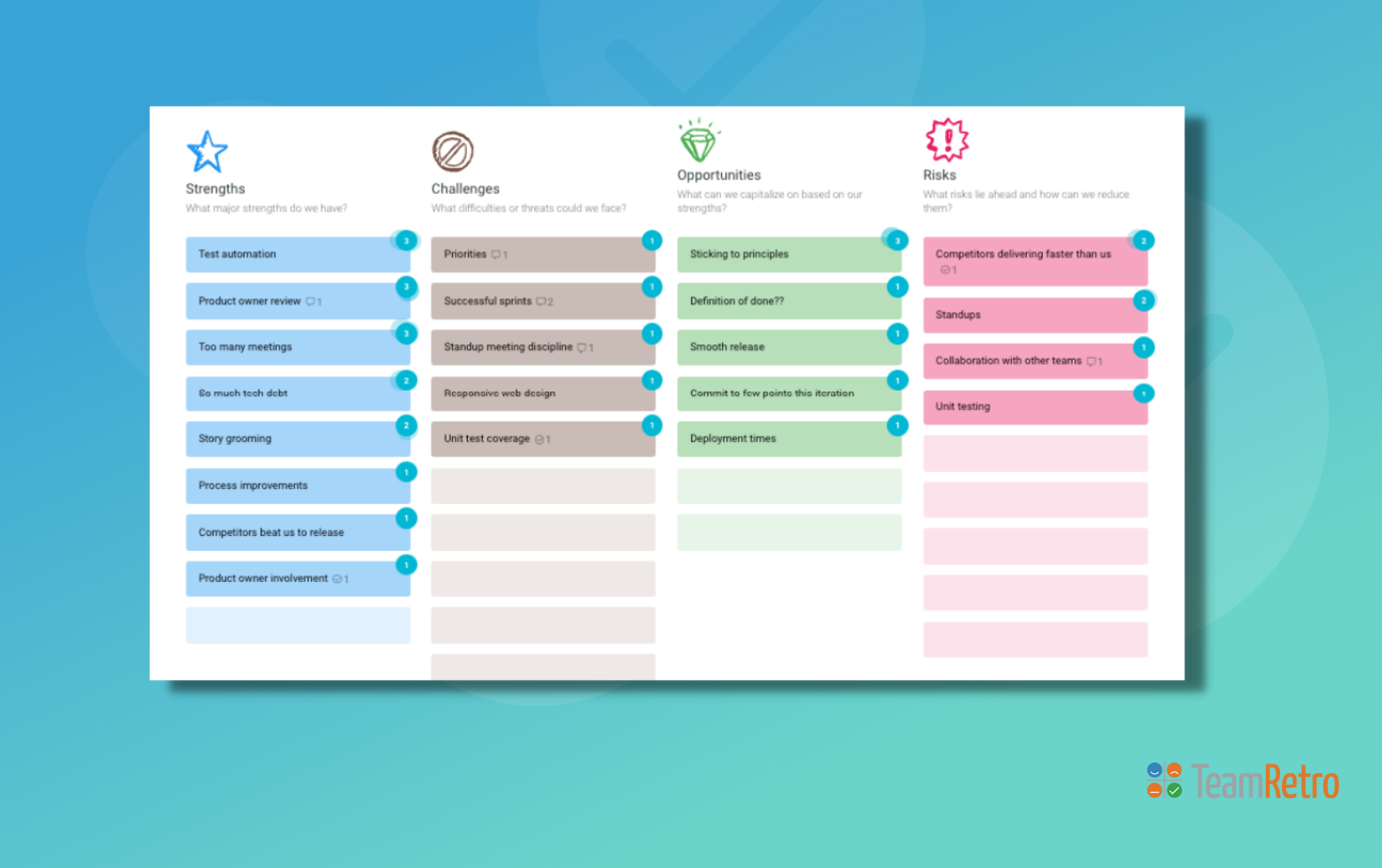
The SCOR Futurespective is a reimagining of the SWOT Analysis to include team empowerment. Weaknesses reframed as challenges and participants identify risks rather than threats. This way, participants view them as less ominous and therefore more manageable. Learn more about SCOR futurespective.
If these aren’t quite what you’re looking for, don’t forget, TeamRetro lets you customize your futurespective or create your own.
We hope this run through of what a futurespective is has given you another tool in your kit and you have what you need to help your team experience success.
Here’s to you and your team’s future!
